The fast-paced evolution of marketing is a sea of trends, from attribution models to the Zero Moment of Truth. So many trends, in fact, that it can be hard to keep track of them all.
A meta-trend runs deeper, powering more specific trends, like a tidal force that drives waves to the shore. The following graphic illustrates five meta-trends that I believe underpin almost all of the marketing trends we see today — and new ones that we can anticipate in the years ahead:
1. The great digital migration of marketing (and business).
Across computers, smartphones, tablets — and soon TV, cars, appliances, wearable computing, and who-knows-what-next — people are continuously engaged in digital platforms at work and home. Digitally-powered buyers have enabled entire marketing movements such as inbound marketing and conversion optimization.
This huge shift in audience behavior has naturally been followed by a shift in marketing spend to the digital domain. It’s not just digital advertising, but investment in technology, human resources in digital functions (such as social media), and budget reallocation towards digital-centric services. This will only accelerate as companies advance from digital marketing to digital business. As Mary Meeker recently said, digital gives us the opportunity to re-imagine everything.
The biggest challenges for marketers in this transformation to digital arise from:
- The explosion from a small number of standardized communications mechanisms to a kaleidoscope of fractured and ever-changing channels, vehicles, devices, and audience contexts.
- The blindingly fast speed at which digital interactions are triggered and evolve.
- The rising expectations of customers in an alway-connected, technology-supercharged, UX-crafted world, where Amazon, Apple, and Google have set the bar high (and are moving it higher).
- The virtual proximity of a much broader range of “competitors” (not always the obvious ones).
- The unprecedented interconnection of nearly everyone via social media into globally accessible, highly specialized, and immensely influential communities.
- The shift of information asymmetry from sellers to buyers — customers now have much more power in the purchasing process than the salespeople who used to be the gatekeepers to solutions.
Meeting these challenges doesn’t just require a new bag of marketing tactics. It requires a rethinking of the marketing organization and the business as a whole. From this one mother-meta-trend, the next four have emerged.
2. The convergence of paid, earned, and owned media.
One of the defining characteristics of digital has been the explosive growth in the number of different media, channels, vehicles, devices, etc. that customers and prospective buyers use. This diverse and fractured landscape has generally been divided into three buckets:
Paid media such as display advertising, paid search, TV spots, outdoor advertising, sponsorships, etc. — anything where the marketer is renting time or space for an engagement with their audience.
Owned media such as a company’s web site, its landing pages, blogs, mobile apps, Facebook pages, YouTube channels, etc. — anything where a company owns or has control over the content of a non-rented space or experience.
Earned media such as traditional press mentions and word-of-mouth to broad new social media mentions, likes, reviews, links, comment threads, forum posts, Pinterest pins, etc. — anything that someone else says about you that you aren’t directly paying them to say.
Marketers have tried to cope with this multiplication of touchpoints by spinning off different groups — or hiring different agencies — to focus on each particular slice of this landscape. But this “horizontal scaling” has led to many silos within marketing that have little continuity and coordination between them.
For the buyer, however, the bright lines between these silos are invisible. They flow from one touchpoint to another, across media, across devices, and they expect their experience with a company to have consistency and continuity. This led to a groundbreaking report published by Altimeter earlier this year promoting the vision of converged media.
Managing the complexity of converged media — as it continues to rapidly evolve — will be one of the biggest strategic, organizational, and technical challenges of marketing for the next two decades.
3. Customer experience as the core of marketing.
Marketing used to interface to the world primarily through communications. Craft the right message, for the right audience, and deliver it to them at the right time, in the right place. The art of storytelling.
But while great storytelling is still essential to marketing success, it is now part of a much larger responsibility: delivering remarkable customer experiences.
There are two reasons why customer experience is becoming the heart of modern marketing:
First, the physical and temporal distance between a communications message (an ad, an email, a link on social media, etc.) and the experience that a prospect or customer has actually interacting with a business has collapsed to a click (or a tap, as the case may be). In the digital world, people go from passively receiving a brand story to actively living that story in an instant. And the experience they have interacting with you — across a myriad of touchpoints via numerous devices — becomes the definition of your brand in their minds.
It’s a tautology: great experience = great brand.
Second, social media gives everyone who has an experience with you — good or bad — the ability to share their story with others. These audience stories have the power to magnify or destroy the “official” stories told by the brand. The only real influence marketers have over this is to make sure that the experiences those audience storytellers have give them reasons to say wonderful things about you.
This is why everything in the customer experience is now a part of marketing. This is a huge increase in the scope of marketing, especially given the explosion of customer touchpoints in the digital age. It requires new skills and capabilities within marketing’s wheelhouse. But it elevates marketing from a role in the supporting cast to the star of the show.
4. Rise of the creative/marketing technologist.
There are two fundamental sources of power in digital: code and data.
Code, i.e., software, lets us shape the digital world. We can create and alter the experiences that customers have with us — via the web, mobile, and future digital devices — with an ease and fluidity that has no parallel in the physical world. It is The Matrix. And software developers are true Neo-like characters, able to forge virtual reality out of the fire of imagination.
Software developers now pervade modern marketing. They work as creative technologists at agencies. They work as product developers for a vast array of vendors creating marketing technology platforms and applications. They work inside marketing departments — or adjacently in IT — as marketing technologists. They work as “growth hackers” at Internet companies, one of the hottest positions in Silicon Valley today.
Not every marketer needs to be a software developer, but every marketing organization must become software-savvy. The choice of which marketing software to adopt and creative ideas for how to use it are powerful sources of differentiation and competitive advantage. Good marketing management now incorporates good technology management too.
Data is the input and output of this code-crafted environment, and it now flows at a prodigious rate and volume. Data enables us to personalize customer experiences at scale in highly innovative ways. Data scientists in marketing unearth new customer insights and market opportunities. Data may soon be a marketing channel itself.
But perhaps more importantly, data has transformed marketing into a more quantitative discipline. This new accountability is helping marketing evolve from an expense to a measurable driver of revenue. It’s making experimentation and optimization, through A/B and multivariate testing, a part of everyday marketing life.
5. Agile marketing management.
It used to be that there was a yearly marketing plan, which was part of a five-year plan. Most of it could be executed in lockstep, quarter by quarter. Marketing had the luxury — or constraints, depending on your point of view — of long planning cycles, which were distinct from long implementation cycles.
No longer. While there is certainly still a need for a guiding long-term strategic vision, the day-to-day operations of modern marketing has to be much more fluid.
Particularly with social media, new crises and opportunities can arise in a matter of hours. But even less urgent interactions with the market are more dynamic in the digital domain. The landscape of potential buyers and competitors changes rapidly.
Thriving in this new environment requires a new approach to marketing management and culture.
This new approach is called agile marketing. It borrows concepts from agile software development, agile project management, the Kanban and Kaizen methods, and the lean start-up movement to help the modern marketing organization be more nimble. (Google has a variation they’re pitching agencies: agile creativity.)
Agile marketing emphasizes:
- An iterative approach to developing programs and deploying tactics
- Open and transparent metrics for tracking those programs and tactics
- Efficient and lightweight collaboration that crosses traditional boundaries
- Daily communication among all the participants in an agile “unit”
- Continuous engagement in experiments and data-driven testing
- Deliverables that are measured in days and weeks, not months or years
- Flexibility to dynamically adjust plans and priorities when things change
Agile marketing gives marketing leaders a framework for incorporating performance marketing, social media marketing, content marketing, conversion optimization, and other responsive, data-driven approaches into the “operating system” of their organizations.
The present and future of marketing
As Isaac Asimov said, “The only constant is change, continuing change, inevitable change.”
If you can have clarity on these five meta-trends — and how your marketing organization is evolutionarily adapting to them — you will be well prepared for the “constant change” that is the environment of marketing today.
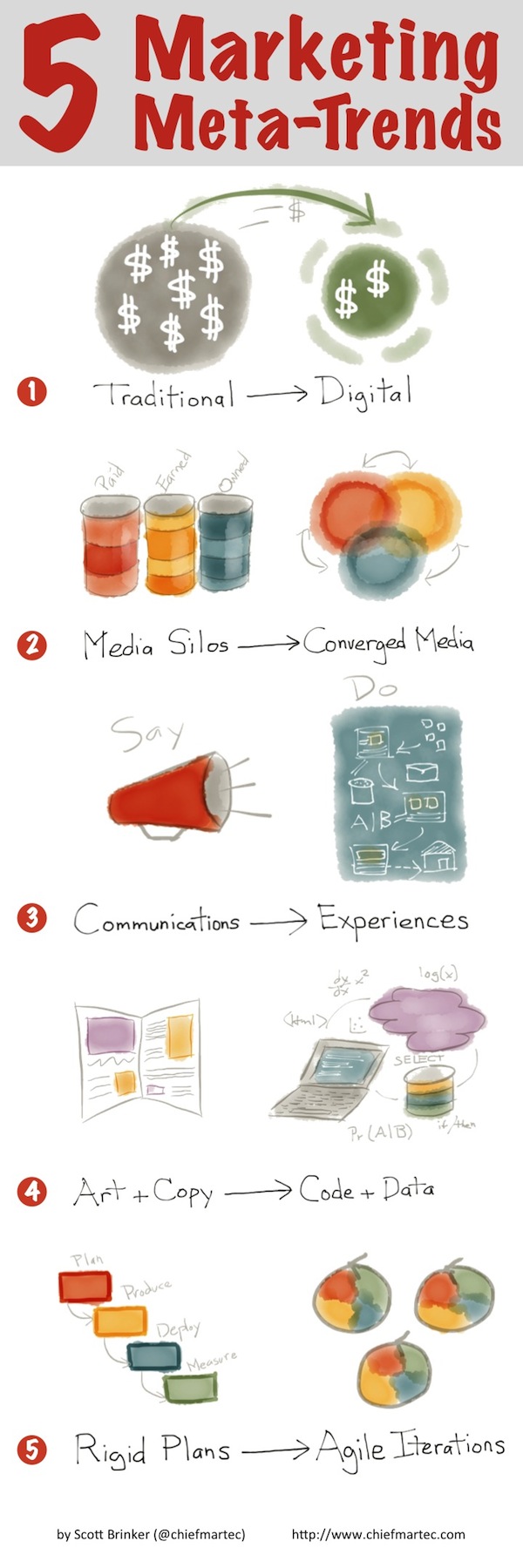
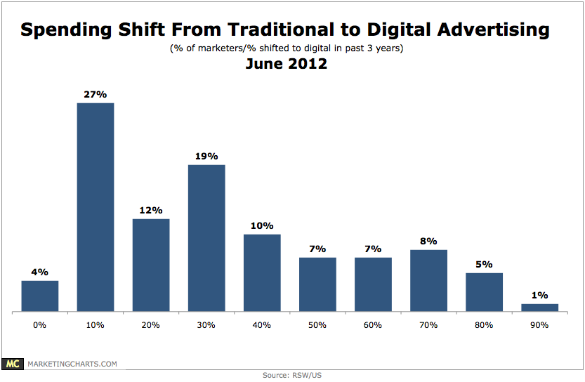

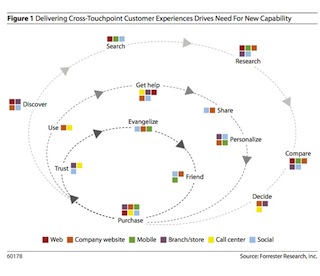
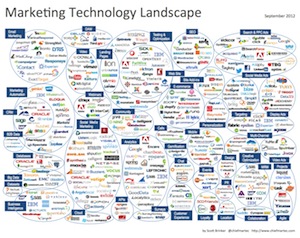
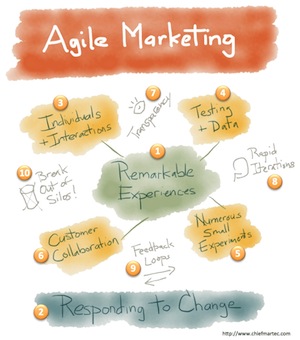



A succint review of the complex environment – Nicely put!
Pingback: Marketing Section: Getting ready for new marketing thinking for brands « Hansa-Cequity's Knowledge Centre
Buckle up!
This is a great post. I have just discovered your blog courtesy of Mitch Joel, and I love it.
As a recent grad I have to say you’re way more in touch with marketing than a lot of textbooks/lectures I’ve had in the past 3 years…excellent blog. I feel fully justified in tabbing up this page and several others at work (Digital Marketing). Cheers!